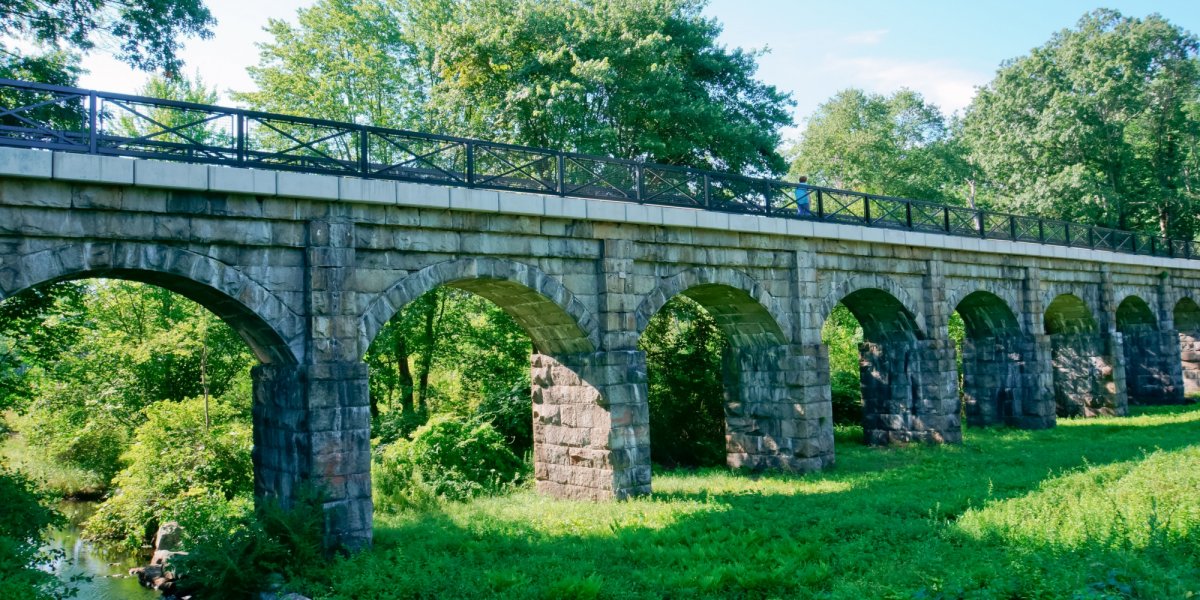A Short History of America’s Rails-to-Trails
Railroads and American history go hand-in-hand. As the United States grew and prospered, railroads were key in getting goods to market and people to new frontiers. Once the transcontinental routes were completed, expansion of the American West came quickly. By 1920 there were some 270,000 miles of the rail network in the United States. They went in every direction and connected cities, towns, mines, ranches, and lumberyards. But, as time marched on, highways began to replace some of the rail routes and for a period of our history, it looked as if railroads might go the way of the dinosaurs. By 1990 the number of miles within the United States rail network had shrunk to 141,000 miles. But something funny happened.
As tracks were torn up, people discovered that these abandoned railroads were perfect for walking. As people walked along these lines it was like a step back in time and a glimpse into history. Railroads connected industry and farmlands, so there were old factories to see, immense grain elevators, and industrial neighborhoods replete with old switches and sidelines. But there was also tremendous beauty along these routes as they crossed the open country, bridged wild rivers, and spanned deep canyons. These were the railroads that connected people, commerce, and prosperity, and even when abandoned, there was plenty of evidence of life and vitality.

Bogastow viaduct, a historical rail bridge of Boston & Worcester line is now a part of the bike trail of Holliston, MA.
Eventually, there were enough of these abandoned lines and people using them that people gave it a name – “Rails-to-Trails.” A small but dedicated group began to recognize the immense value these railroad right-of-ways had and how they could once again become conduits to reconnect people and communities. They recognized that these abandoned rail lines offered a rare opportunity to preserve open space, create wildlife habitat and promote healthy living through physical activity.
From this group of thoughtful people, an organization sprung up in 1986 to promote the preservation and transformation of rails-to-trails, calling itself the Rails-to-Trails Conservancy. At the time there were fewer than 200 known rail-trails. But as the concept caught on that would change dramatically.
Since its humble beginnings in 1986, the Rails-to-Trails Conservancy has continued to grow and has been instrumental in promoting and helping to develop a system that now comprises over 20,000 miles of rail-trails throughout the United States. There are over 150,000 members and supporters who hope to add another 9,000 miles of rail-trails as time continues. This has been a most fortuitous idea and is at the core of a growing national trail system that is improving the lives of thousands and creating a better future for America.

Guests ride through an old railway tunnel along the Hiawatha Trail in North Idaho
Some of these rail-trails are now paved and have been fully transformed into superb biking trails. Others remain as gravel pathways suitable for walking or mountain biking. Some are used by horseback riders and folks in wheelchairs. They are offering thousands of people a new way to bring the healthy outdoor living into their own lives while also creating a healthier environment and economic promise in the communities they travel through.
We are particularly fortunate here in eastern Washington, north Idaho, and western Montana to have some of the finest rails-to-trails in the nation thanks to a lot of dedicated and hardworking local people who made them a reality.
ROW Adventures offers self-guided bike tours on a number of our region’s Rails-to-Trails. In addition, we have fully guided bike trips that link the Washington/Idaho Centennial Trail, Trail of the Coeur d’Alenes, Route of the Olympian, and Route of the Hiawatha to offer you a high-quality experience that showcases our area’s beauty and history.



